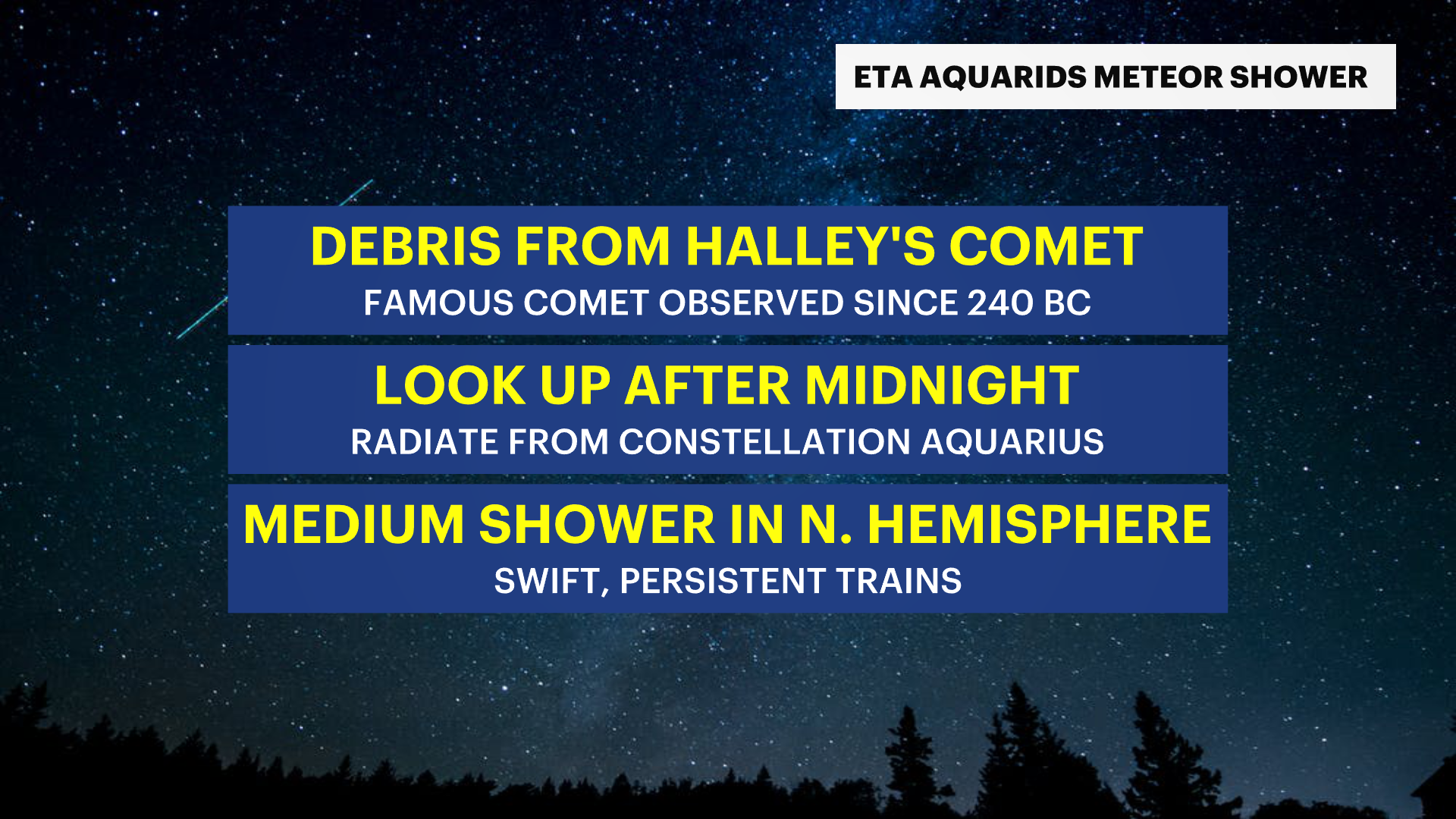More Stories
The month of May brings the full Flower Moon, as well as the annual Eta Aquarids Meteor Shower. This year, both occur on the same night. This poses problems for anyone who was hoping to catch a glimpse of a few shooting stars this weekend, but not all hope will be lost.

The full moon takes place on Friday, May 5. It is known as the Flower Moon due to the spring season and the abundance of flowers this time of year. The moon will be full at 1:36 p.m., but we won’t see it until at least 8:14 p.m. when it rises in the east. Be sure to look for it right after sunset and near the horizon. It will look larger before it rises higher in the sky.

This year, the Eta Aquarid Meteor shower will also peak on the night of May 5 into May 6. This annual shower comes from debris from the well-known Halley’s Comet. The best time to view this shower is after midnight and during the pre-dawn hours. Unfortunately for this year, the bright full moon may make some of the fainter meteors hard to see. If you do go out, try to look in the opposite direction and away from the moon. The moon will be up all night and set at 6:10 a.m.
The Eta Aquarids is a strong shower when viewed from the Southern Tropics, but here in the Northern Hemisphere, they only produce medium rates of 10-30 per hour, right before dawn. They are known for their swift meteors with trains and a few very large fireballs. The shower is best visible for a few days on either side of the peak, but it’s possible to see them through the end of the month.

Halley's Comet is now at its farthest point from the sun and won’t return to the inner solar system until 2061. It was last seen in 1986, but the debris trails that produce the shower were left hundreds of years ago. The Earth will run into more debris from Halley's Comet in October to form the Orionid Meteor Shower.
The light pollution in the tri-state area can make things like the Eta Aquarids difficult to view. Try to find the darkest patch of sky, away from city lights and also look away from the bright full moon! You don’t have to look directly at the radiate point, just look up. It may take a little while for your eyes to adjust, so grab the lawn chairs or blankets and get comfortable. Dress warmly, even though it’s now spring, temperatures at night can get cool especially when the sky clears
.
More from News 12
2:14

NJ Legislature advances series of anti-ICE bills following fatal shooting by ICE agent in Minnesota
0:48

Jersey Proud: Delbarton student creates ‘Dogs of Delbarton’ contest for charity
0:38

Authorities make 7 arrests in connection with gunfire incident at Willowbrook Mall
1:51

Coast Guard releases new report on Port Newark cargo ship fire that killed 2 firefighters
0:40

Police arrest man accused of throwing rock at school bus, injuring child
1:57
